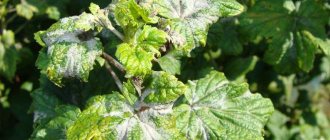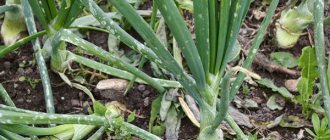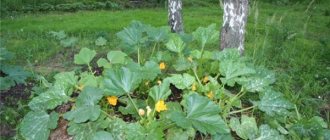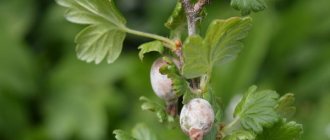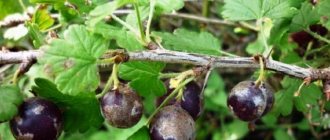Powdery mildew is one of the most unpleasant and widespread fungal diseases in our latitudes, which can seriously reduce yields, especially in a greenhouse. Mycoses are the general name for plant diseases caused by microscopic parasitic fungi.
Interestingly, powdery mildew in different crops is caused by fungi belonging to different families. In particular, the culprits of cucumber infections are fungi from the Erysiphaceae family of the Sphaerotheca genus.
This disease is also known as ash and white. They reflect the main external symptom of the disease - a white, “mealy” coating on the leaves, shoots and fruits.
Causes of powdery mildew on cucumbers
As already mentioned, powdery mildew is a fungal disease, the causative agents of which are found in the top layer of soil, on the remains of last year’s harvest and on dried weeds. They are not afraid of frost. The pathogen overwinters in the soil and on plant waste, where it lives for 6-7 years.
The pathogen becomes active in the spring, when the air becomes warm. High humidity is the main factor that awakens fungal spores. In dry weather, plants are rarely affected by powdery mildew.
Spores are carried by wind and raindrops. They attach to cucumber leaves, most often to the lower ones. The first symptoms of the disease can be noticed 4-5 days after infection - this is the duration of the incubation period.
The most common causes of powdery mildew in cucumbers and favorable conditions for the spread of the fungus:
- Sudden changes in temperature;
- Heavy rainfall;
- Using cold water for irrigation;
- Plantings that are too dense, preventing proper ventilation and drying of the soil after rains;
- Remains of last year's wilted plants that were not removed from the garden in the fall;
- Overgrown weeds, improper care of the site;
- Insufficient sunlight in the beds;
- There is too much nitrogen in the soil and not enough phosphorus or potassium.
Too densely planted cucumbers
Symptoms of the disease
Fungal spores colonize plant epithelial cells at the seedling stage. Infection occurs throughout the growing season, but progresses with the arrival of the summer season. They form a white coating - mycelium. This is the first sign of the onset of the disease.
The foliage, petioles and stems of cucumbers suffer from powdery mildew:
- fragmentary spots on the upper side of the foliage gradually merge into a single spot, the edges take on a wavy appearance, dry out, bend downwards, and over time they fall off;
- white cushions consisting of fungal spores appear on the stems;
- The cucumber vines begin to dry out.
The incubation period for the development of the disease is 3-5 days.
First, the lesions become noticeable:
- in greenhouses - near the entrance, near window frames, in the area of breaks in the film coating;
- in an open garden bed - in the most humid places where water accumulates.
Thickened cucumber plantings are the first to suffer.
Fighting powdery mildew of cucumbers
Start by removing all diseased leaves on your cucumbers, then break off or trim off all the lower leaf blades of the plant, including healthy ones. Remove all cut foliage from the garden bed into a plastic bag or burn it.
After this, you can use folk remedies or chemicals.
Folk remedies for combating powdery mildew on cucumbers
Soda
To prepare the product, 30 g of baking soda must be diluted in 5 liters of water. To enhance the effect, you need to add 10 ml of liquid soap. Mix the ingredients thoroughly until they have a homogeneous consistency, and then you can start spraying the plants and the soil around them. The disease can be cured after three such procedures. The first two sprayings are carried out 2 days in a row, and the third - a week later.
Iodine
Cucumbers can be treated with an alcohol solution of iodine (sold in pharmacies) at the first sign of symptoms or sharp fluctuations in day and night temperatures. The product contains alcohol and iodine. Iodine is an antiseptic that causes the death of pathogenic microflora. Alcohol also has antiseptic properties and inhibits the growth of pathogenic microorganisms, but does not kill them. To prepare the product, 10 ml of a 5% iodine solution is diluted in 10 liters of water.
Milk and iodine
In a liter of milk you need to dissolve 12-14 drops of iodine and add a bucket of water. The resulting solution must be sprayed onto the plants from a spray bottle in the evening.
Kefir
Preventive treatment of cucumbers is carried out with a kefir solution (1 l/10 l of water). Lactic acid bacteria are antagonists of pathogenic microflora and prevent its development and spread.
Wood ash
A solution of wood ash can also help combat downy mildew. To prepare the product, you need to carefully sift the wood ash - this will help get rid of any impurities and large particles. Then you need to dilute 2 cups of ash in 3 liters of water and leave for 2-3 hours. Strain the resulting solution through several layers of gauze and use it to spray cucumbers.
Onion peel
Another remedy for powdery mildew on cucumbers is an infusion of onion peels. It is effective only in the early stages of infection. To prepare the indicated composition, place 400 grams of husks in a large metal container and add 10 liters of water. Then put on fire and bring to a boil. Before use, the solution must infuse for 3 days.
Mullein infusion
A three-day infusion of cow dung also has some fungicidal effect. The product is prepared from 1 kg of mullein and 10 liters of water.
Preparations for powdery mildew
- Inorganic fungicides with a protective function, well-proven: Cumulus, Privent, Bayleton, Kuproksat, Karatan EC. Carry out processing in accordance with the instructions.
- To combat fungus on cucumbers use: Gamair (2 tablets per 3 liters of water), Fundazol (10 g per 10 liters, at the first symptoms of the disease), Fitosporin-M (10 g per 5 liters of water, spray 3 times with an interval of 10- 15 days), Topsin-M and Alirin-B.
- For prevention, before the first symptoms of powdery mildew appear on cucumbers, use: Topaz (at the rate of 2 ml per 10 liters of water or 0.025-0.05% solution), Quadris - 0.05%, Strothby (0.02%), and Ridomil Gold, Thiovit Jet, Oxychom, oxychloride, solution of Bordeaux mixture (at the rate of 1 tsp per 10 liters of water).
Good results are achieved when using colloidal sulfur. To spray cucumbers when grown in the ground, a 20 percent solution is required. Treatment should be carried out in cloudy weather at temperatures from +20 to +30°C. Sulfur is not suitable for greenhouse crops, as even a standard concentration can cause severe leaf burn.
And a bonus - a pharmaceutical remedy for powdery mildew on cucumbers - furatsilin. Furacilin solution is easy to prepare. To do this, you need to dissolve 10 tablets in a small amount of hot water, then bring the solution to 10 liters. Thus, the product is prepared at the rate of 10 tablets per 10 liters.
Prevention
If you purchase varieties of cucumbers that are resistant to fungal diseases, and also carry out simple preventive measures annually, you will not have to fight the infection.
- For planting, only high-quality material is used and before sowing it must be treated with special disinfectants and growth stimulants.
- Don't plant cucumbers too early. By the time seedlings or seeds are planted, the soil should warm up to +16 °C.
- Plant the crop in properly prepared soil. It is necessary to dig up, remove all plant remains, and apply fertilizer.
- The development of powdery mildew can be triggered by an excess or lack of mineral fertilizers, so fertilizing should be balanced, timely and moderate.
- Water the cucumbers with warm, settled water.
- Follow the rules of crop rotation. The crop is not planted in the same place for two years in a row. If signs of disease are noticed on cucumbers, then the next season plants that are resistant to powdery mildew and other cucumber infections are planted in this place.
- In greenhouses, it is necessary to control the temperature and humidity of the air and ventilate it regularly.
- Before planting, it is important to disinfect the soil.
- If powdery mildew appears every year, then remove the top layer to a depth of 10 cm, and pour new soil on top.
- Plantings should not be too dense.
Photo: Watering with cold water can trigger the development of powdery mildew.
Such simple, effective measures are sometimes more effective than chemical treatments.
Greenhouse treatment after powdery mildew
After growing cucumbers in a greenhouse, it is necessary to treat the greenhouse at the end of the season, especially if there were traces of powdery mildew on the plants. There are many effective ways.
Photo: After growing cucumbers in a greenhouse, it is important to process and disinfect it
- Fumigation with a sulfur bomb. When it burns, sulfur dioxide is released into the air, which kills all viruses and bacteria. But the disadvantage of this option is that not only pathogenic microorganisms are killed, but also beneficial ones. The soil completely loses its fertility.
- Treatment with copper-containing preparations (copper sulfate, Khom, Bordeaux mixture).
- Since fungal spores will not live and develop on the walls of the greenhouse, they prefer organic matter in the soil, the structure itself can simply be washed with a weak solution of potassium permanganate. More attention is paid to soil disinfection.
- To cultivate the soil in a greenhouse, it is better to use biological preparations (Trichodermin, Sporobacterin, Fitosporin). They inhibit fungal spores and other pathogenic microorganisms, but at the same time enrich and improve the soil structure. They cannot be used together; an interval of at least a week must be maintained.
If there is mulch left in the greenhouse, it must be removed outside the shelter and burned.
Signs of the disease
Powdery mildew can be confused with rot or downy mildew. It can be recognized by the course of the disease.
First it affects the lower leaves and gradually moves to the upper part of the bush.
The greens become covered with spots with a mealy structure and a greenish, gray-white or light yellow color.
A characteristic difference from other diseases is the appearance of brown balls on the surface of foliage and young twigs, as well as an increase in the density of plaque and its darkening.
The fight against powdery mildew should be started immediately after the first signs of the disease are detected. Delaying the process will reduce the likelihood of recovery.
Milk and iodine
Iodine is an antiseptic that, when interacting with water, releases active oxygen. It is destructive for fungal diseases.
Milk contains microelements beneficial for the plant, and its protein foam is able to cover the surface, preventing fungi and bacteria from penetrating deep into the leaf.
To prepare a solution for treatment, you need to mix 10 drops of 5% iodine with 1 liter of skim milk or whey. Dilute the resulting mixture in 9 liters of water, let the solution stand for a couple of minutes so that the ingredients combine well. Pour into a spray bottle, spray the foliage on both sides and the entire length of the stems.
It is better to treat bushes in the evening in calm weather. Once every 10 days or after heavy rain, the procedure must be repeated.
Are there varieties resistant to this disease?
Due to the emergence of fungal resistance to chemicals and other drugs, breeders began to develop varieties resistant to powdery mildew. These include:
- Tolstoy;
- Swart;
- Marmande;
- Roma;
- Scarlet candles;
- Rambinik.
Compliance with all the rules will significantly reduce the risk of powdery mildew. Proper care and control of plants will help to detect the disease in time and stop it at the initial stage of development.
